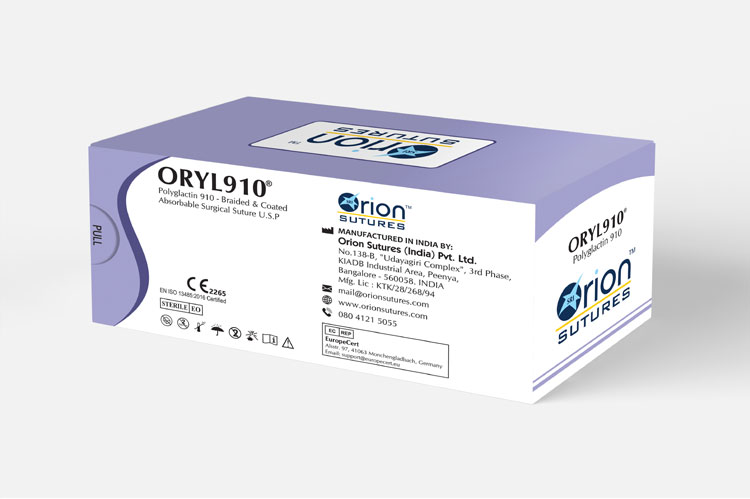VICRYL Suture is a smooth, synthetic, absorbable suture that easily passes through tissue with minimal drag, allowing for ease of handling, smooth tie down, and unrivalled knot security.
The suture retains its tensile strength in tissue for two to three weeks before being completely absorbed by acid hydrolysis in 56 to 70 days. The polyglactin 910 suture manufacturer in India is a popular suture material.
Wound care is a critical component of emergency medicine practice. Clinicians treat wounds ranging from minor lacerations or abrasions to complex wounds.
Wound closure techniques have advanced significantly, ranging from simple sutures to adhesive compounds, and techniques have improved. It is critical to assess the wound and determine how best to treat it for injuries that require further management.
Wound closure can be accomplished through a variety of methods. Sutures, staples, and adhesives are examples of these. It is widely used in medical sectors. They are highly in recommendation and need to be highly used for better treatments.
- How effective is sutures for stitches?
Sutures are the gold-standard method of wound closure for many minor wounds. When dealing with a linear laceration on the scalp or extremities, staples are a viable option.
They have the advantage of being able to be placed quickly. This is extremely useful in situations where there is a lot of bleeding, as well as in mass casualty settings where there are a lot of wounds to attend to.
They are also commonly used to close incised wounds after surgery. Staples are less expensive, easier to use, require less training, and have comparable healing times and infection rates to sutures.
Sutures are classified into two types: absorbable and non-absorbable.
Non-absorbable sutures are preferred because they have high tensile strength and will not dissolve during the natural healing process. Non-absorbable sutures are typically used to close superficial wounds, whereas absorbable sutures can be used to close deeper wounds in a double layer closure.
- Why use sutures?
The use of sutures can reduce the risk of wound dehiscence and results in a more aesthetically pleasing outcome. Synthetic sutures have a tendency to lose their “memory.” As a result, absorbable sutures help to reduce tension and better approximate wound edges.
In other words, they tend to keep the shape of their packaging. This may make manipulating the suture during wound closure more difficult.
The type of suture and technique used are determined by the type of wound, its depth, the degree of tension, and the desired cosmetic results. Because the use of separate stitches allows for a better approximation of the skin and fascia, simple interrupted sutures produce more cosmetically appealing results.
- A stitched suture material for better use
A mattress stitch can be used to provide additional strength to a deeper wound. The deeper penetration into the skin layers reduces tension and allows for better wound closure.
They can be used as temporary stitches that are removed once the tension has been distributed more evenly across the wound. If there is still tension after the wound has been closed, the mattress stitch can be left in place to reduce the risk of dehiscence. Mattress sutures are available in vertical and horizontal subtypes.
Concluding parts
The vicryl sutures 910 supplier needs to be properly used. The materials used in the sutures are just great and highly beneficial. Sutures are the standard of care for primary wound closure.
They have higher tensile strength and are less likely to injure cutaneous circulation. Furthermore, in the event of an infection, the entire length of sutures would not have to be removed.
